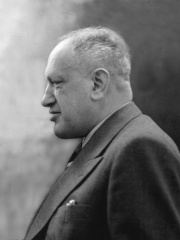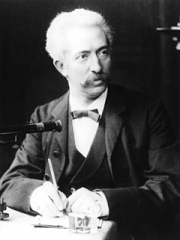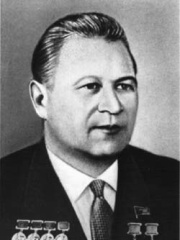
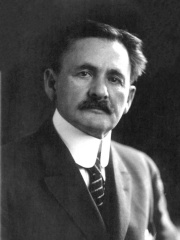
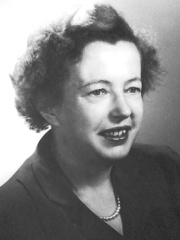
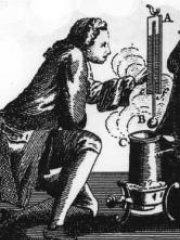
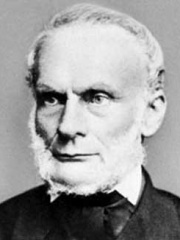
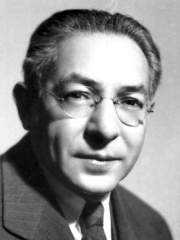
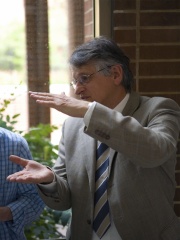
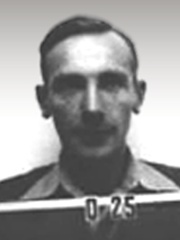
The Most Famous
PHYSICISTS from Poland
This page contains a list of the greatest Polish Physicists. The pantheon dataset contains 851 Physicists, 18 of which were born in Poland. This makes Poland the birth place of the 10th most number of Physicists behind Austria, and Japan.
Top 10
The following people are considered by Pantheon to be the top 10 most legendary Polish Physicists of all time. This list of famous Polish Physicists is sorted by HPI (Historical Popularity Index), a metric that aggregates information on a biography's online popularity. Visit the rankings page to view the entire list of Polish Physicists.

1. Marie Curie (1867 - 1934)
With an HPI of 94.30, Marie Curie is the most famous Polish Physicist. Her biography has been translated into 189 different languages on wikipedia.
Maria Salomea Skłodowska-Curie (Polish: [ˈmarja salɔˈmɛa skwɔˈdɔfska kʲiˈri] ; née Skłodowska; 7 November 1867 – 4 July 1934), better known as Marie Curie ( KURE-ee; French: [maʁi kyʁi] ), was a Polish and naturalised-French physicist and chemist who conducted pioneering research on radioactivity. She was the first woman to win a Nobel Prize, the first person to win a Nobel Prize twice, and the only person to win a Nobel Prize in two different scientific fields. Her husband, Pierre Curie, was a co-winner of her first Nobel Prize, making them the first married couple to win the Nobel Prize and launching the Curie family legacy of five Nobel Prizes. She was, in 1906, the first woman to become a professor at the University of Paris. She was born in Warsaw, in what was then the Kingdom of Poland, part of the Russian Empire. She studied at Warsaw's clandestine Flying University and began her practical scientific training in Warsaw. In 1891, aged 24, she followed her elder sister Bronisława to study in Paris, where she earned her higher degrees and conducted her subsequent scientific work. In 1895, she married the French physicist Pierre Curie, and she shared the 1903 Nobel Prize in Physics with him and with the physicist Henri Becquerel for their pioneering work developing the theory of "radioactivity"—a term she coined. In 1906, Pierre Curie died in a Paris street accident. Marie won the 1911 Nobel Prize in Chemistry for her discovery of the elements polonium and radium, using techniques she invented for isolating radioactive isotopes. Under her direction, the world's first studies were conducted into the treatment of neoplasms by the use of radioactive isotopes. She founded the Curie Institute in Paris in 1920, and the Curie Institute in Warsaw in 1932; both remain major medical research centres. During World War I, she developed mobile radiography units to provide X-ray services to field hospitals. While a French citizen, Marie Skłodowska Curie, who used both surnames, never lost her sense of Polish identity. She taught her daughters the Polish language and took them on visits to Poland. She named the first chemical element she discovered polonium, after her native country. Marie Curie died in 1934, aged 66, at the Sancellemoz sanatorium in Passy (Haute-Savoie), France, of aplastic anaemia likely from exposure to radiation in the course of her scientific research and in the course of her radiological work at field hospitals during World War I. In addition to her Nobel Prizes, she received numerous other honours and tributes; in 1995 she became the first woman to be entombed on her own merits in the Paris Panthéon, and Poland declared 2011 the Year of Marie Curie during the International Year of Chemistry. She is the subject of numerous biographies.

2. Albert A. Michelson (1852 - 1931)
With an HPI of 84.49, Albert A. Michelson is the 2nd most famous Polish Physicist. His biography has been translated into 93 different languages.
Albert Abraham Michelson (December 19, 1852 – May 9, 1931) was a Polish experimental physicist known for his work on measuring the speed of light and especially for the Michelson–Morley experiment. In 1907, he received the Nobel Prize in Physics, becoming the first American to win the Nobel Prize in a science. He was the founder and the first head of the physics departments of the Case School of Applied Science and the University of Chicago.

3. Maria Goeppert Mayer (1906 - 1972)
With an HPI of 82.73, Maria Goeppert Mayer is the 3rd most famous Polish Physicist. Her biography has been translated into 97 different languages.
Maria Goeppert Mayer (German: [maˈʁiːa ˈɡœpɐt ˈmaɪɐ] ; née Göppert; June 28, 1906 – February 20, 1972) was a German–American theoretical physicist who shared the 1963 Nobel Prize in Physics with J. Hans D. Jensen and Eugene Wigner. One half of the prize was awarded jointly to Goeppert Mayer and Jensen "for their discoveries concerning nuclear shell structure". She was the second woman to win the Nobel Prize in Physics, the first being Marie Curie in 1903. In 1986, the Maria Goeppert Mayer Award for early-career women physicists was established in her honor. A graduate of the University of Göttingen, Goeppert Mayer wrote her doctoral thesis on the theory of possible two-photon absorption by atoms. At the time, the chances of experimentally verifying her thesis seemed remote, but the development of the laser in the 1960s later permitted this. Today, the unit for the two-photon absorption cross section is called the Goeppert Mayer (GM) unit. Maria Goeppert married American chemist Joseph Edward Mayer and moved to the United States, where he was an associate professor at Johns Hopkins University. Strict rules against nepotism prevented Johns Hopkins University from taking her on as a faculty member, but she was given a job as an assistant and published a landmark paper on double beta decay in 1935. In 1937, she moved to Columbia University, where she took an unpaid position. During World War II, she worked for the Manhattan Project at Columbia on isotope separation, and with Edward Teller at the Los Alamos Laboratory on the development of thermonuclear weapons. After the war, Goeppert Mayer became a voluntary Associate Professor of Physics at the University of Chicago (where her husband and Teller worked) and a senior physicist at the university-run Argonne National Laboratory. She developed a mathematical model for the structure of nuclear shells, for which she was awarded the Nobel Prize in Physics in 1963. In 1960, she was appointed Full Professor of Physics at the University of California, San Diego.

4. Daniel Gabriel Fahrenheit (1686 - 1736)
With an HPI of 79.17, Daniel Gabriel Fahrenheit is the 4th most famous Polish Physicist. His biography has been translated into 79 different languages.
Daniel Gabriel Fahrenheit FRS (24 May 1686 – 16 September 1736) was a physicist, inventor, and scientific instrument maker. He was born in Poland to a family of German origin, although he spent much of his life in the Dutch Republic. Fahrenheit significantly improved the design and manufacture of thermometers; his were accurate and consistent enough that different observers, each with their own Fahrenheit thermometers, could reliably compare temperature measurements with each other. Fahrenheit is also credited with producing the first successful mercury-in-glass thermometers, which were more accurate than the spirit-filled thermometers of his time and of a generally superior design. The popularity of his thermometers also led to the widespread adoption of his Fahrenheit scale, with which they were provided.
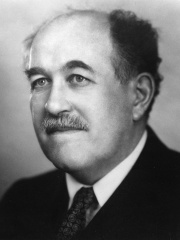
5. Otto Stern (1888 - 1969)
With an HPI of 78.32, Otto Stern is the 5th most famous Polish Physicist. His biography has been translated into 88 different languages.
Otto Stern was also the pen name of German women's rights activist Louise Otto-Peters (1819–1895). Otto Stern (German: [ˈɔto ˈʃtɛʁn] ; 17 February 1888 – 17 August 1969) was a German-American experimental physicist. He is the second most nominated person for a Nobel Prize, with 82 nominations during the years 1925–1945. In 1943, he received the Nobel Prize in Physics "for his contribution to the development of the molecular ray method and his discovery of the magnetic moment of the proton".

6. Rudolf Clausius (1822 - 1888)
With an HPI of 76.74, Rudolf Clausius is the 6th most famous Polish Physicist. His biography has been translated into 69 different languages.
Rudolf Julius Emanuel Clausius (German pronunciation: [ˈʁuːdɔlf ˈklaʊzi̯ʊs]; 2 January 1822 – 24 August 1888) was a German physicist and mathematician and is considered one of the central founding fathers of the science of thermodynamics. By his restatement of Sadi Carnot's principle known as the Carnot cycle, he gave the theory of heat a truer and sounder basis. His most important paper, "On the Moving Force of Heat", published in 1850, first stated the basic ideas of the second law of thermodynamics. In 1865 he introduced the concept of entropy. In 1870 he introduced the virial theorem, which applied to heat.

7. Isidor Isaac Rabi (1898 - 1988)
With an HPI of 72.02, Isidor Isaac Rabi is the 7th most famous Polish Physicist. His biography has been translated into 78 different languages.
Israel "Isidor" Isaac Rabi (; Yiddish: איזידאָר יצחק ראַבי, romanized: Izidor Yitzkhok Rabi; July 29, 1898 – January 11, 1988) was an American nuclear physicist who received the Nobel Prize in Physics in 1944 "for his resonance method for recording the magnetic properties of atomic nuclei". He was also one of the first scientists in the United States to work on the cavity magnetron, which is used in microwave radar and microwave ovens. Born into a traditional Polish-Jewish family in Rymanów, Rabi came to the United States as an infant and was raised in New York's Lower East Side. He entered Cornell University as an electrical engineering student in 1916, but soon switched to chemistry. Later, he became interested in physics. He continued his studies at Columbia University, where he was awarded his doctorate for a thesis on the magnetic susceptibility of certain crystals. In 1927, he headed for Europe, where he met and worked with many of the finest physicists of the time. In 1929, Rabi returned to the United States, where Columbia offered him a faculty position. In collaboration with Gregory Breit, he developed the Breit–Rabi equation and predicted that the Stern–Gerlach experiment could be modified to confirm the properties of the atomic nucleus. His techniques for using nuclear magnetic resonance to discern the magnetic moment and nuclear spin of atoms earned him the Nobel Prize in Physics in 1944. Nuclear magnetic resonance became an important tool for nuclear physics and chemistry, and the subsequent development of magnetic resonance imaging (MRI) from it has also made it important to the field of medicine. During World War II he worked on radar at the Massachusetts Institute of Technology (MIT) Radiation Laboratory (RadLab) and on the Manhattan Project. After the war, he served on the General Advisory Committee (GAC) of the Atomic Energy Commission, and was chairman from 1952 to 1956. He also served on the Science Advisory Committees (SACs) of the Office of Defense Mobilization and the Army's Ballistic Research Laboratory, and was Science Advisor to President Dwight D. Eisenhower. He was involved with the establishment of the Brookhaven National Laboratory in 1946, and later, as United States delegate to UNESCO, with the creation of CERN in 1952. When Columbia created the rank of university professor in 1964, Rabi was the first to receive that position. A special chair was named after him in 1985. He retired from teaching in 1967, but remained active in the department and held the title of University Professor Emeritus and Special Lecturer until his death.

8. Klaus von Klitzing (b. 1943)
With an HPI of 71.64, Klaus von Klitzing is the 8th most famous Polish Physicist. His biography has been translated into 68 different languages.
Klaus von Klitzing (German: [ˈklaʊs fɔn ˈklɪtsɪŋ] ; born 28 June 1943) is a German physicist, known for discovery of the integer quantum Hall effect, for which he was awarded the 1985 Nobel Prize in Physics.

9. Joseph Rotblat (1908 - 2005)
With an HPI of 71.35, Joseph Rotblat is the 9th most famous Polish Physicist. His biography has been translated into 59 different languages.
Sir Joseph Rotblat (Polish: Józef Rotblat; 4 November 1908 – 31 August 2005) was a Polish and British physicist. During World War II he worked on Tube Alloys and the Manhattan Project, but left the Los Alamos Laboratory on grounds of conscience after it became clear to him in 1944 that Germany had ceased development of an atomic bomb. His work on nuclear fallout was a major contribution toward the ratification of the 1963 Partial Nuclear Test Ban Treaty. A signatory of the 1955 Russell–Einstein Manifesto, he was secretary-general of the Pugwash Conferences on Science and World Affairs from their founding until 1973 and shared, with the Pugwash Conferences, the 1995 Nobel Peace Prize "for efforts to diminish the part played by nuclear arms in international affairs and, in the longer run, to eliminate such arms."

10. Hagen Kleinert (1941 - 2025)
With an HPI of 67.09, Hagen Kleinert is the 10th most famous Polish Physicist. His biography has been translated into 28 different languages.
Hagen Kleinert (15 June 1941 – 7 March 2025) was a professor of theoretical physics at the Free University of Berlin, Germany (since 1968), Honorary Doctor at the West University of Timișoara, and at the Kyrgyz-Russian Slavic University in Bishkek. He is also Honorary Member of the Russian Academy of Creative Endeavors. For his contributions to particle and solid-state physics he was awarded the Max Born Prize 2008 with Medal. His contribution to the memorial volume celebrating the 100th birthday of Lev Davidovich Landau earned him the Majorana Prize 2008 with Medal. He is married to Dr. Annemarie Kleinert since 1974 with whom he has a son Michael Kleinert.
People
Pantheon has 18 people classified as Polish physicists born between 1686 and 1961. Of these 18, 2 (11.11%) of them are still alive today. The most famous living Polish physicists include Klaus von Klitzing, and Artur Ekert. The most famous deceased Polish physicists include Marie Curie, Albert A. Michelson, and Maria Goeppert Mayer. As of April 2024, 1 new Polish physicists have been added to Pantheon including Artur Ekert.
Living Polish Physicists
Go to all RankingsDeceased Polish Physicists
Go to all RankingsMarie Curie
1867 - 1934
HPI: 94.30
Albert A. Michelson
1852 - 1931
HPI: 84.49
Maria Goeppert Mayer
1906 - 1972
HPI: 82.73
Daniel Gabriel Fahrenheit
1686 - 1736
HPI: 79.17
Otto Stern
1888 - 1969
HPI: 78.32
Rudolf Clausius
1822 - 1888
HPI: 76.74
Isidor Isaac Rabi
1898 - 1988
HPI: 72.02
Joseph Rotblat
1908 - 2005
HPI: 71.35
Hagen Kleinert
1941 - 2025
HPI: 67.09
Leopold Infeld
1898 - 1968
HPI: 66.15
Friedrich Ernst Dorn
1848 - 1916
HPI: 63.42
Vladimir Chelomey
1914 - 1984
HPI: 62.12
Newly Added Polish Physicists (2025)
Go to all RankingsOverlapping Lives
Which Physicists were alive at the same time? This visualization shows the lifespans of the 15 most globally memorable Physicists since 1700.


